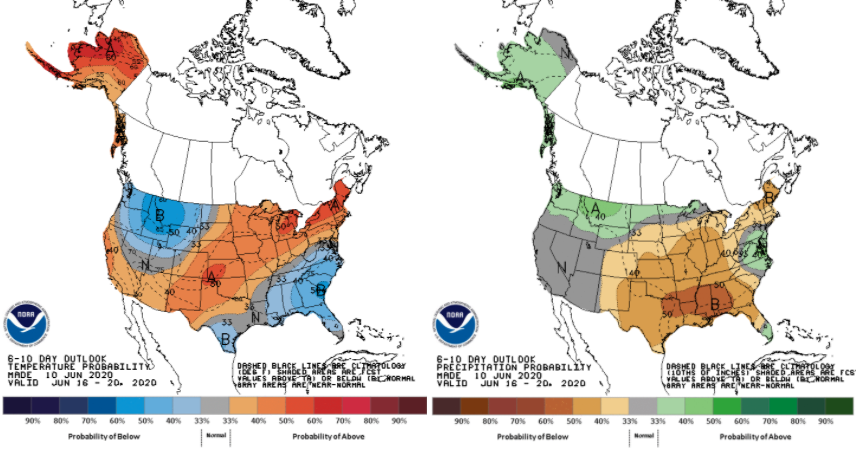The forecasts and climate outlooks over the next several weeks is calling for below-normal precipitation and above-normal temperatures (Figure 1). This could lead to rapid drying of soils and vegetation. There is some hope that this dry period will be short lived, with outlooks providing some confidence that above-normal precipitation may occur after June 20th.
The U.S. Drought Monitor (https://droughtmonitor.unl.edu/) is the national resource for tracking abnormally dry and drought conditions as well as monthly and seasonal drought outlooks. The June drought outlook, released May 31st, does not indicate the likeliness of drought developing in the Indiana region. This may be good news as these outlooks often include larger-scale atmospheric patterns that would increase confidence of longer periods of dryness that would lead to the development of drought. Therefore, while we could be entering a period of dryness, there are no obvious indicators that this will be the beginning of a significant, long-lasting drought.
Temperatures have been warm with high humidity this past week, mostly due to the remnants of Tropical Storm Cristobal passing through the Midwest. However, a cold front is expected to follow that will bring drier and cooler temperatures to the area. Growing degree days are still lagging behind throughout Indiana, but are gradually catching up to past years.

Figure 1. The 6-10-day climate outlook representing June 16-20 showing increased confidence of above-normal temperatures (left) and below-normal precipitation (right) over Indiana.




